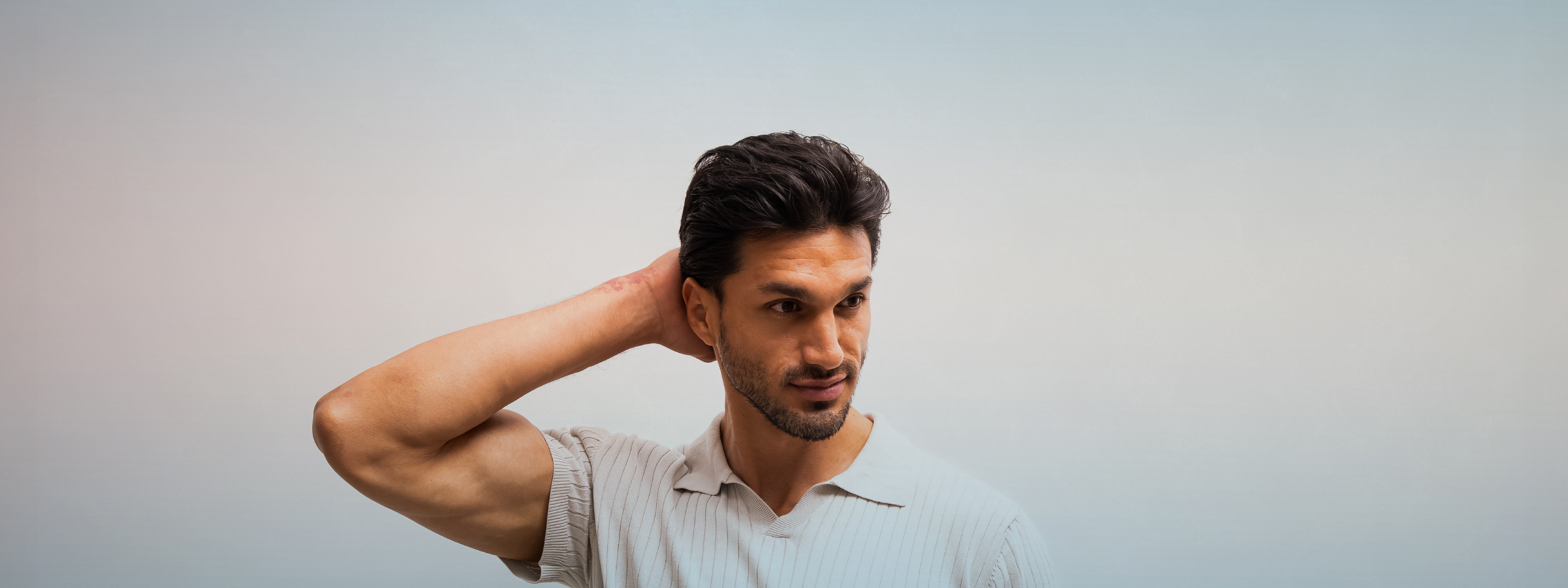Languages
Arabic, English, RussianClinics
HealthHub Day Surgery - Festival City

If you’re noticing a receding hairline or thinning crown, HealthHub Clinics in Dubai is here to help. We offer advanced hair transplant solutions for both men and women – with a special focus on treating male pattern baldness – to restore not just your hair, but your confidence and sense of well-being. Our approach blends medical expertise with an approachable, wellness-centered touch, ensuring you feel supported at every step of your hair restoration journey.
HealthHub Day Surgery - Festival City
HealthHub Day Surgery – Festival City
HealthHub Day Surgery – Festival City

If you are experiencing pattern baldness, thinning hair, or patchy hair loss and have healthy hair growth in a donor area (usually the back or sides of the scalp), you are likely a good candidate for a hair transplant. Ideal candidates are in good overall health and have realistic expectations. Our doctors will evaluate your scalp to ensure you have sufficient donor hair and that your hair loss has stabilized (for example, men with male pattern baldness often start in their late 20s or 30s once the pattern is more established). Both men and women can benefit from hair transplants, though the approach may differ slightly. During your consultation, we will determine if a hair transplant is the right solution for you or if other treatments should be considered first.
Hair transplant surgery at HealthHub is performed under local anesthesia, so you won’t feel pain during the actual follicle removal or implantation. You might feel a little pinch or pressure when the anesthetic is administered, but after that the scalp goes numb. Throughout the procedure, we continually check to make sure you’re comfortable – many patients even relax, listen to music, or nap while we work. After the transplant, once the anesthesia wears off, it’s normal to have some tenderness, mild soreness or tightness in the scalp. However, this discomfort is usually very manageable and fades within a few days. We’ll provide you with pain relief medication and detailed post-op care instructions to minimize any soreness. Most patients are pleasantly surprised at how slight the pain is – often comparing it to the discomfort of a sunburn on the scalp, which is temporary.
Because we use FUE and Direct Hair Implantation techniques (which do not involve large incisions), scarring is minimal and barely noticeable. FUE may leave tiny round dot scars in the donor area where follicles were taken, but these dots are so small (usually less than 1mm) that they blend in with the surrounding skin and hair. Even with short hair, they are typically hard to see. There is no long linear scar, as would be the case with the older strip surgery method. In the transplanted areas on top of your head, you won’t have any visible scars at all – just new hair growing. We will also give you guidance on caring for your donor area so it heals as discreetly as possible. After full healing, most people have no visible sign of surgery, and they can style their hair however they please.
Recovery after an FUE or Direct Hair Implantation hair transplant is relatively quick. Most patients can go home shortly after the procedure and return to routine, non-strenuous activities within 2-3 days. If you have an office job or light duties, you might even go back to work after a long weekend. In the first week, you’ll need to be gentle with your scalp – no heavy workouts, swimming, or scratching/rubbing the transplanted area. There may be some minor swelling on your forehead or around the transplant zone for a few days (we provide a soft headband to help with this). Tiny scabs will form where grafts were placed; these usually shed off by around day 7-10. By two weeks out, most of the outward signs of surgery (like redness or scabs) have resolved, and you’ll look very much like your usual self, just with very short new hairs visible. We schedule follow-up appointments to check that you’re healing well. Following our aftercare instructions will ensure a smooth recovery. And remember, our team is always available if you have questions during your healing period.
Hair restoration is a gradual process, so patience is key. In the first few weeks after your transplant, it’s expected that the transplanted hairs will shed – this is completely normal and happens to almost everyone. The hair shafts fall out, but the transplanted follicles remain safely in place under the skin. After a shedding phase, the follicles enter a resting cycle before producing new hair. You should start noticing new hair growth from the transplanted follicles around 3 to 4 months post-surgery. From that point, the hairs will continue to grow and thicken. By about 6 months, many patients see a significant improvement in hair fullness and can appreciate the emerging results. The full, final results typically take around 9 to 12 months to become apparent, as the hair reaches normal length and density. The wait is well worth it – once grown, the transplanted hair is permanent. It will behave like your natural hair (because it is!), which means you can cut, style, and treat it just as you would otherwise. We’ll be with you during the follow-up period to monitor growth progress. For many patients, seeing that first new hair and watching their hairline fill in over time is an exciting and rewarding experience.